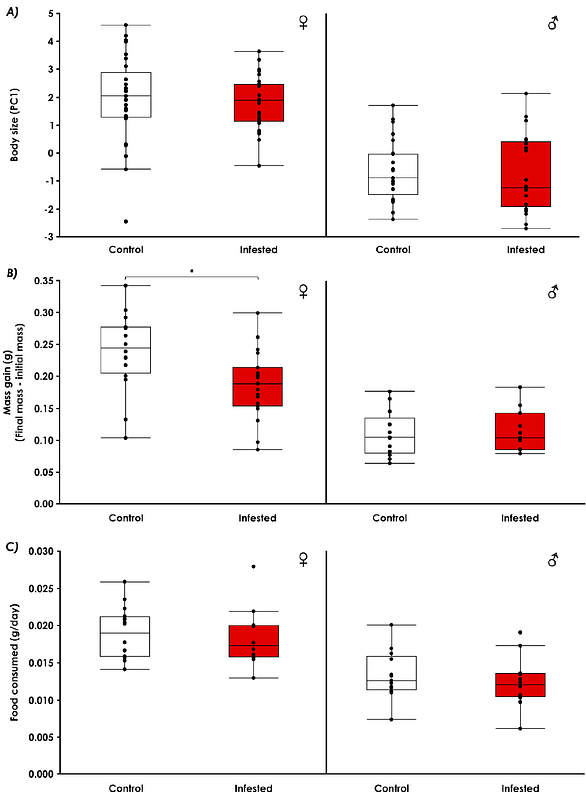Farmed crickets raised with dermestids suffer from reduced and delayed growth, but not enough to explain reports of dramatic yield loss

Farmed crickets raised with dermestids suffer from reduced and delayed growth, but not enough to explain reports of dramatic yield loss
Muzzatti, M. J.; Ritchie, M. W.; Bess, E. C.; Bertram, S. M.; MacMillan, H. A.
AbstractThe mass production of crickets for food and feed is an expanding North American industry. Facilities that mass rear insects are at risk of pest infestations because the optimal environmental conditions for rearing beneficial species may also support the development of pest species. Here, we present the first recorded results detailing the interactions between dermestids and farmed crickets. Cricket farms have reported extremely low harvest yield during heavy dermestid infestations, but the exact reasons for this low yield are unknown. Many dermestid larvae are covered in dense, detachable, barbed setae called hastisetae, which are used by the larvae as an active trapping system against arthropod predators. We designed a series of experiments to test the hypotheses that dermestids (Dermestes ater DeGeer) may be directly impacting cricket (Gryllodes sigillatus Walker) yield through the physical effects of hastisetae ingestion and/or indirectly impacting cricket yield through competition for fishmeal, a primary source of protein in conventional cricket feed. Our predictions that cricket life history and survival would be negatively affected by dermestids were largely refuted. Females fed infested diets grew less mass, but not smaller body size, compared to females fed uninfested diets. We also found that while crickets experienced delayed growth early in life after living with dermestids, they were able to tolerate living with, and consuming, dermestid larvae. We discuss how these findings have led to new hypotheses concerning how dermestid infestations drive reductions in cricket farm yield.


